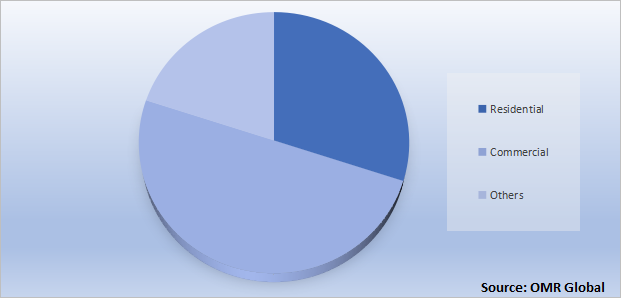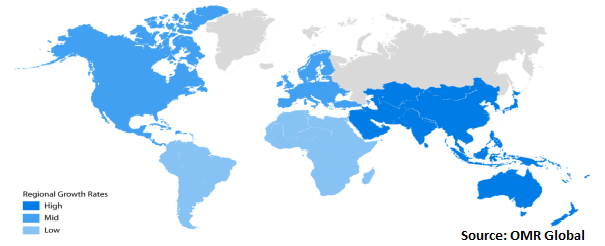Air Quality Sensors Market
Global Air Quality Sensor Market Size, Share & Trends Analysis by Product Type (Fixed and Portable), by Location of Sensors (Indoor and Outdoor), and by Application (Residential, Commercial, and Others) Forecast Period (2022-2028) Update Available - Forecast 2025-2035
The global air quality sensor market is anticipated to grow at a significant CAGR of 9.7% during the forecast period. Air quality sensors are components of air purifiers that detect and monitor air pollution in a specific area whether it is an indoor or an outdoor environment. The major factors augmenting the growth of the market include the rise in pollution levels which has led to an increase in the number of air-borne diseases. The diseases include asthma, chronic obstructive pulmonary disease, lung cancer, and cardiovascular problems among others. This has eventually led to a rise in awareness of the adverse impact of hazardous gases. In addition to this, a rise in government regulations to limit air pollution and initiatives toward the development of environment-friendly industries are expected to fuel the growth of the air quality sensor market in the forecast period.
However, certain factors are affecting the growth of the market. High prices, complexity in technologies and shorter lifespan of air quality sensors are some of the key factors that may restrain the growth of the air quality sensor market. The need of monitoring the air quality in enclosed spaces, such as offices, homes, classrooms, and other indoor areas has also made a significant impact on the growth and can act as an opportunity for the growth of the market in the forecast period.
Moreover, the ongoing global pandemic, that is COVID-19, can also result in an opportunity for the growth of the market as gas sensors can be used in indoor environments for assessing the risks of COVID-19 transmission.
Impact of COVID-19 Pandemic on Global Air Quality Sensor Market
The COVID-19 pandemic has had a considerable impact on the air quality sensor market. The spread of COVID-19 had a detrimental influence on the market due to supply chain disruptions as a result of protracted plant closures around the world. The COVID-19 pandemic has broken out, and the situation is still uncertain. Manufacturing and construction sectors, coal-fired facilities, schools, academic institutes, shopping malls, and office buildings have all had their operations temporarily halted, resulting in lower air pollution. Factory closures and border closures have disrupted manufacturing, supply, and sales in a variety of industries, effectively halting activity. Air pollution is being reduced all across the world as people and products move less. Following the restoration of business processes, the demand for air quality sensors will increase to continue reducing the detrimental effects of air pollutants on the environment. Furthermore, as a result of COVID-19, the use of portable air quality sensors will rise among persons to protect themselves.
Segmental Outlook
The global air quality sensor market is segmented based on product type, location of sensors, and applications. By product type, the market is segmented into fixed devices and portable devices. Based on the location of the sensors, the market is bifurcated into indoor air quality sensors and outdoor air quality sensors. Further based on the application segment, the market is segmented into residential, commercial, and others.
Global Air Quality Sensor Market Share by Application, 2021 (%)

The Commercial Segment is Anticipated to Hold a Prominent Share in the Global Air Quality Sensor Market
The commercial segment is expected to hold a prominent share owing to new launches in the market. New product launches by indoor air quality sensor providers such as HORIBA, Ltd., Thermo Fisher Scientific, Inc., Siemens AG, Emerson Electric Co., and 3M Co. are expected to contribute to the growth of this market segment. For instance, in November 2020, Honeywell announced the launch of its new products to improve air quality in commercial buildings. The product name for the same was Honeywell's Particulate Matter Sensor PM2.5, Total Volatile Organic Compound (TVOC) Sensor, and All-in-One IAQ Sensor which were used to measure particles that allow taking corrective actions.
Regional Outlooks
The global air quality sensor market is further segmented based on geography including North America (the US, and Canada), Europe (Italy, Spain, Germany, France, and Others), Asia-Pacific (India, China, Japan, South Korea, and Others), and the Rest of the World (the Middle East & Africa, and Latin America). The market can be analyzed for a particular region or country level as per the requirement. Among these, the North American regional market is expected to cater to considerable growth during the forecast period. The high awareness among people and technological advancements is one of the major factors driving the growth of the market in the region.
Global Air Quality Sensor Market Growth, by Region 2022-2028

The Asia-Pacific Region is Expected to Hold a Prominent Share in the Global Air Quality Sensor Market
The Asia-Pacific region is expected to hold a prominent share in the global Air Quality Sensor market. Rapid growth in industrialization, increase in population and urbanization in the emerging economies and continuous government support for the development of advanced products are some of the factors that contribute to the growth of the market in the Asia-Pacific region.
Market Players Outlook
The major companies serving the global air quality sensor market include Siemens AG, Aeroqual Ltd., Honeywell International Inc., Agilent Technologies, Inc., Emerson Electric Co., HORIBA, Ltd., and 3M Co. The players have adopted various developmental strategies for expanding their market share, increasing profitability, and remaining competitive in the market. For instance, in February 2021, 3M Co. announced the launch of the 3M Clean & Protect Certified Badge Program for monitoring and protecting facilities to create a safer work environment.
The Report Covers
- Market value data analysis of 2021 and forecast to 2028.
- Annualized market revenues ($ million) for each market segment.
- Country-wise analysis of major geographical regions.
- Key companies operating in the global air quality sensor market. Based on the availability of data, information related to new product launches, and relevant news is also available in the report.
- Analysis of business strategies by identifying the key market segments positioned for strong growth in the future.
- Analysis of market-entry and market expansion strategies.
- Competitive strategies by identifying ‘who-stands-where’ in the market.


